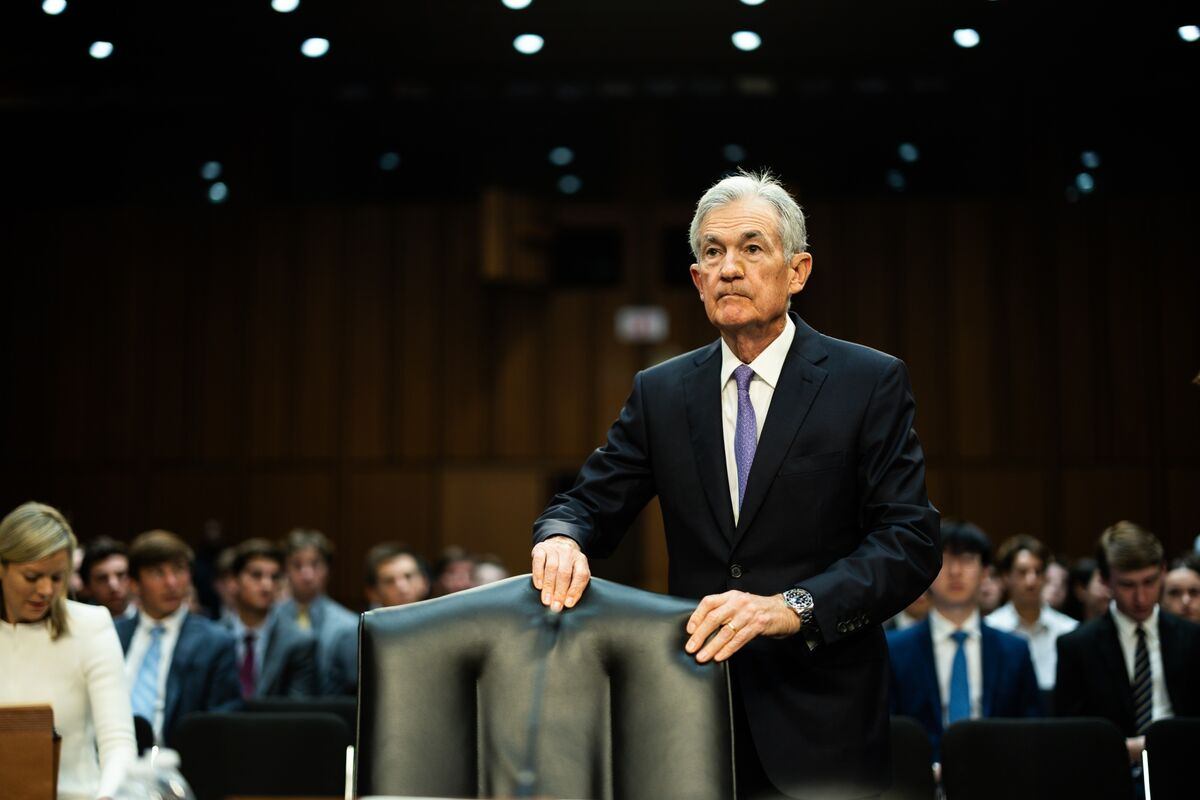Powell: Don't have to wait until inflation returns to 2% to cut rates
Soldiers and horses not moving, food and grass first.Of the $39 billion of 10-year Treasuries auctioned by the Treasury on Wednesday, overall auction results were solid and strong。
Powell's Congressional Testimony Enters Second Day
On July 11th, during his exchange with both the Senate and the House of Representatives, Powell provided a more detailed explanation of the Federal Reserve's latest stance on inflation, employment, interest rates, and balance sheet management.
Regarding recent inflation data, Powell stated that although inflation figures have been cooling, the Federal Reserve is not yet fully convinced that inflation can sustainably return to the 2% target level. He emphasized that while there is some confidence in the receding of inflation, the current progress is not sufficient to assert that the target can be achieved and maintained. This indicates that Powell still maintains a cautious dovish attitude towards interest rate cuts.
Interestingly, even though the Federal Reserve has said it needs more evidence to show that inflation has fundamentally eased, Powell pointed out in Congress that the Federal Reserve does not have to wait for the inflation rate to drop to 2% before considering an interest rate cut. The market believes that this move by Powell is a hint at a rate cut, leaving room for future monetary policy adjustments. Additionally, Powell also pointed out signs of weakness in the labor market, suggesting that this may be a key factor prompting the Federal Reserve to take the next step.
Powell also pointed out that the current monetary policy is restrictive, and the neutral interest rate - the interest rate level that neither stimulates nor inhibits economic growth - has risen at least in the short term. A higher neutral interest rate implies a higher long-term policy interest rate. Institutional analysis believes that Powell's views on the neutral interest rate are relatively hawkish, while the Federal Reserve's expert on this issue, New York Fed Chairman Williams, continues to argue that the neutral interest rate has not been raised. Powell also revealed that the topic of the neutral interest rate will be further discussed in the Federal Reserve's policy assessment at the end of the year.
As the last hearing before the U.S. election, Powell also emphasized the policy independence of the Federal Reserve. Powell clearly stated that the Federal Reserve's interest rate decisions will be based on economic data, prospects, and risk balance, not political factors. In advance, some institutions pointed out that Powell may need to explain in Congress why the Federal Reserve chooses to maintain a higher level of interest rates, even if this is contrary to the calls of some political leaders.
This Thursday, the United States will release the highly anticipated June CPI data. According to economists' estimates, the core CPI year-on-year growth rate in June will be the same as last month, at 3.4%; the June CPI year-on-year growth rate will further slow down to 3.1%, showing that inflation is steadily moving towards the target. The May data has already shown that the core CPI year-on-year growth rate in the United States has dropped to a three-year low, and the Federal Reserve's anti-inflation efforts have been effective.
Before the troops move, the supplies must be prepared. In the auction of $39 billion in 10-year Treasury bonds by the Ministry of Finance on Wednesday, the overall auction result was robust and strong. The winning interest rate of this 10-year Treasury bond auction was 4.276%, significantly lower than the 4.438% in June, representing the market's bearish view of future Treasury bond yields. In addition, in this Treasury bond auction, the allocation ratio of primary dealers was only 11.5%, highlighting strong real demand. Analysis suggests that after the 3-year U.S. Treasury bond auction performed well the previous day, this 10-year U.S. Treasury bond auction once again performed well, confirming that the market has no worries about Thursday's U.S. CPI data.
Guided by Powell's speech, the three major U.S. stock indexes collectively rose by more than 1% on Wednesday, with the S&P and Nasdaq continuing to set new historical highs, and the Dow Jones ending two consecutive losses. As of the close, the S&P 500 index rose by 1.02%, to 5,633.91 points, setting the 37th new high of the year in seven consecutive increases; the Nasdaq Composite Index rose by 1.18%, to 18,647.45 points, also rising for the seventh consecutive day, setting the 27th new high of the year; the Dow Jones index rose by 1.09%, to 39,721.36 points.
As of press time, according to CME's "FedWatch": The probability of the Federal Reserve maintaining the interest rate unchanged in August is 94.3%, and the probability of a 25 basis point rate cut is 5.7%. The probability of the Federal Reserve maintaining the interest rate unchanged by September is 27.4%, with a cumulative probability of a 25 basis point rate cut at 68.6%, and a cumulative probability of a 50 basis point rate cut at 4.0%.
The interest rate futures market shows that the Federal Reserve is only one step away from a rate cut in September.

·Original
Disclaimer: The views in this article are from the original Creator and do not represent the views or position of Hawk Insight. The content of the article is for reference, communication and learning only, and does not constitute investment advice. If it involves copyright issues, please contact us for deletion.